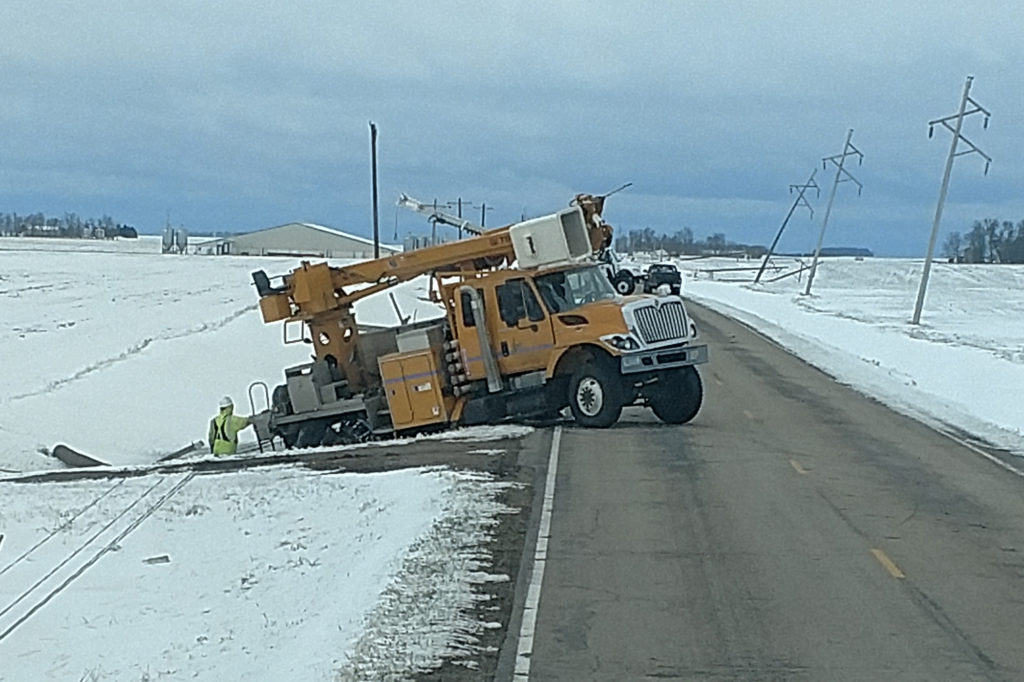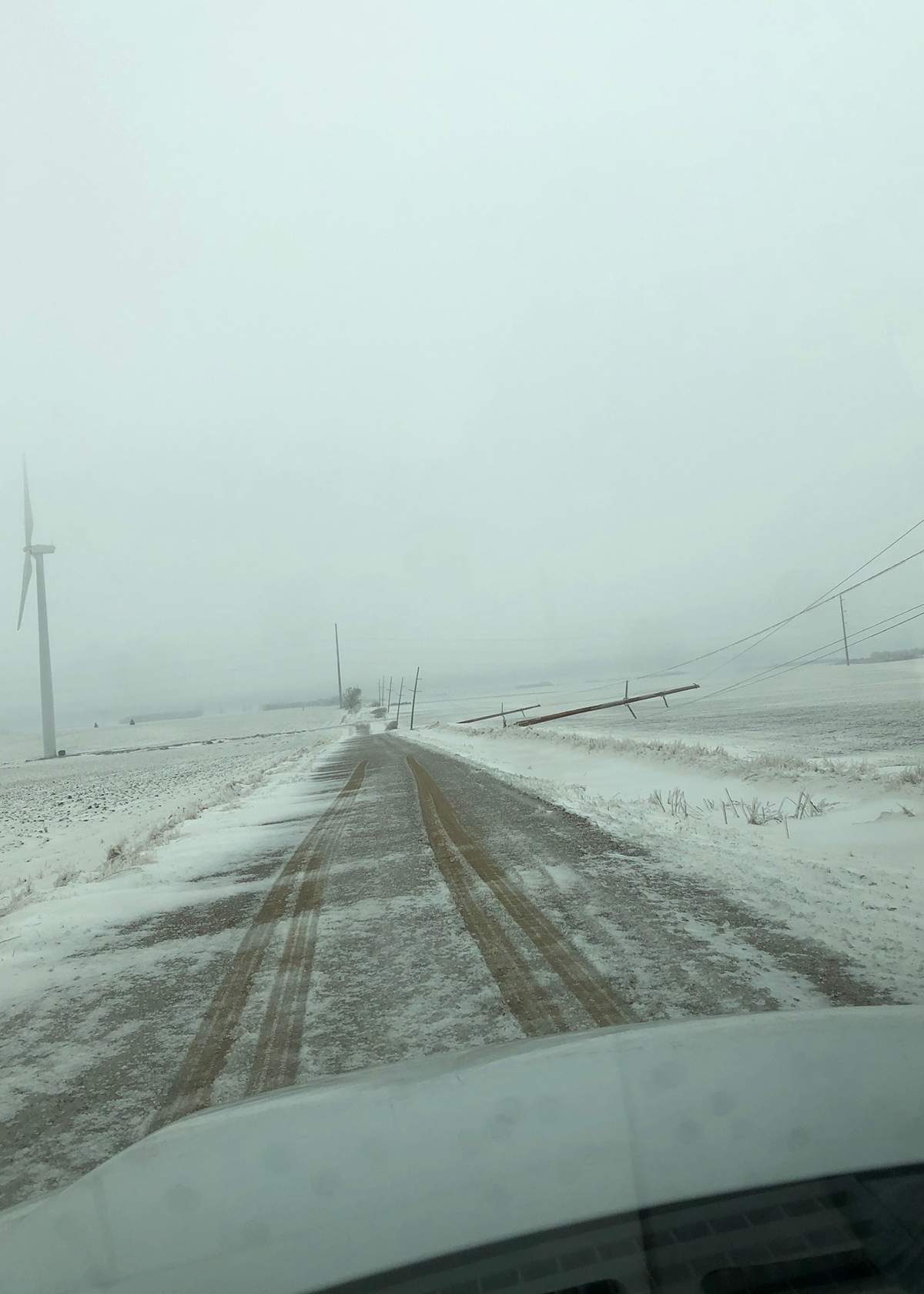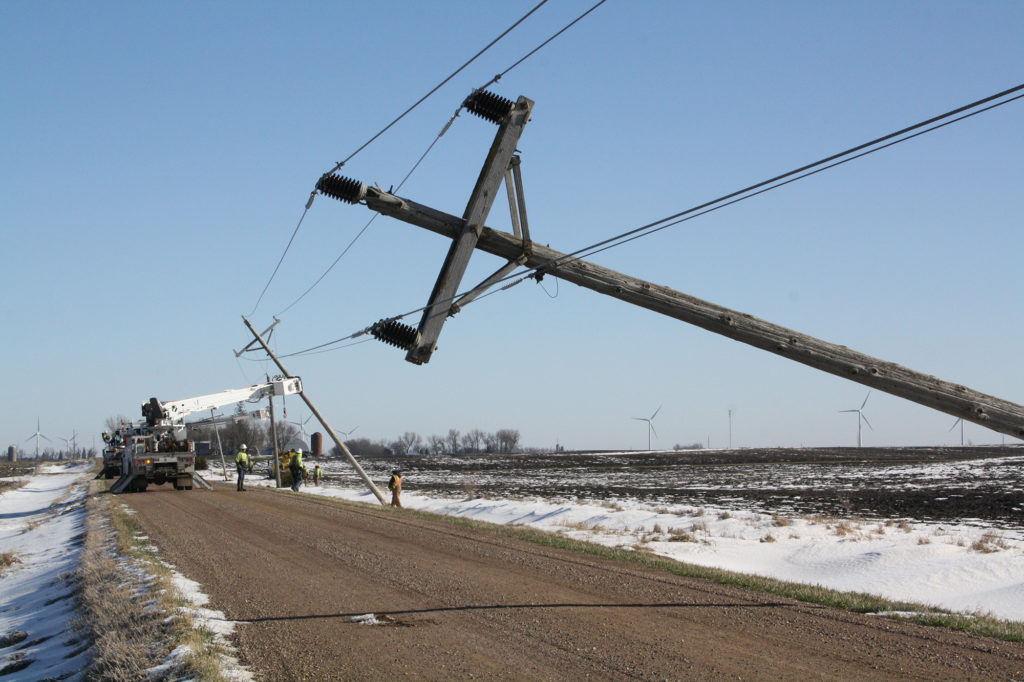
When spring storms bring high winds, heavy snow and freezing rain to areas served by electric cooperatives, line technicians and other operations personnel face long days and nights of restoration work.
Crews from distribution co-ops in the upper Midwest spent the weekend replacing hundreds of poles and miles of power lines on their systems after massive storms spawned by a bomb cyclone weather system moved across their service territories last week. And their generation and transmission providers also took a heavy hit.
Maple Grove, Minnesota-based Great River Energy lost more than 339 transmission structures across its system in what G&T officials described as an unprecedented amount of damage. Work to restore service to three of the 15 affected substations continued Monday.
“Our crews are working as fast as they safely can to restore power and repair the damage,” said Priti Patel, Great River Energy’s vice president and chief transmission officer.

The extent of damage across the service territories of three of the 28 distribution co-ops served by GRE has led to days of complex repair work with more than 50 transmission repair crews involved. Officials expect repairs to continue for weeks.
“The scope and magnitude of our restoration effort is huge, and the safety of our crews comes first as we work to get the lights back on and the system rebuilt,” Patel said.
In many areas, transmission repair crews and distribution co-op crews and contractors worked on repairs to their respective systems on adjacent rights of way, indicating the intensity of winds and ice accumulations during the storm.
Work with the co-ops and neighboring utilities has been coordinated because the power grid is highly interconnected, said Patel. She added that it could take several days to complete full restoration, and then some homes, farms and businesses could need additional repairs before they can safely resume service.
In Jackson, Minnesota, Federated Rural Electric reported 2,700 outages across its system, as restoration numbers fluctuated with severe weather conditions.
“The ice buildup and strong winds cause the lines to gallop and slap together,” said Federated’s operations manager, Joe Marthaler, adding that crews completed initial restoration work Sunday afternoon.

“This is one of the largest storms, if not the largest, we’ve had run through our service area in Minnesota,” said Brenda Tesch, public relations director of MiEnergy Cooperative.
The Rushford, Minnesota-based distribution co-op serves more than 18,700 members in northeastern Iowa and southeastern Minnesota, and it reported outages affecting 5,000 meters and 110 broken distribution poles in the aftermath of the storm.
Weather-related problems left 25 substations without power for La Crosse, Wisconsin-based Dairyland Power Cooperative.
Crews worked through Saturday morning to restore service, said Brian Rude, Dairyland Power’s vice president of external and member relations. “We had more than 100 transmission structures damaged or destroyed.”
Restoration work also continues in South Dakota, where Sioux Valley Energy still had 131 operations personnel from 16 co-ops and contractors in the field as of Monday. Since the storm hit last week, the Colman-based distribution co-op has identified more than 600 broken poles on its system. High winds and the stress of leaning poles mired in thawing soil continue to push that number higher.
Crews were working to restore service Monday to about 1,200 SVE members, down from a peak of more than 10,000. With 150 areas served by 18 substations showing outages, co-op officials are telling members that some may not have service restored before week’s end.
Derrill Holly is a staff writer at NRECA.